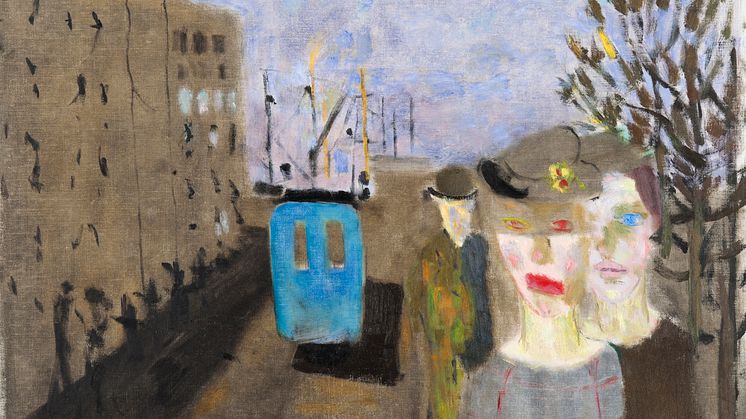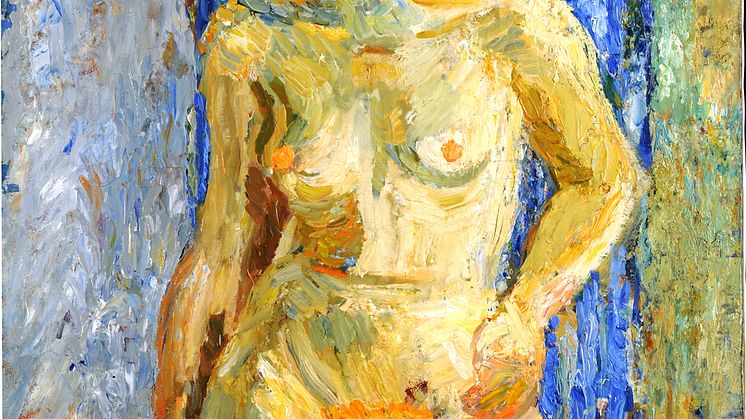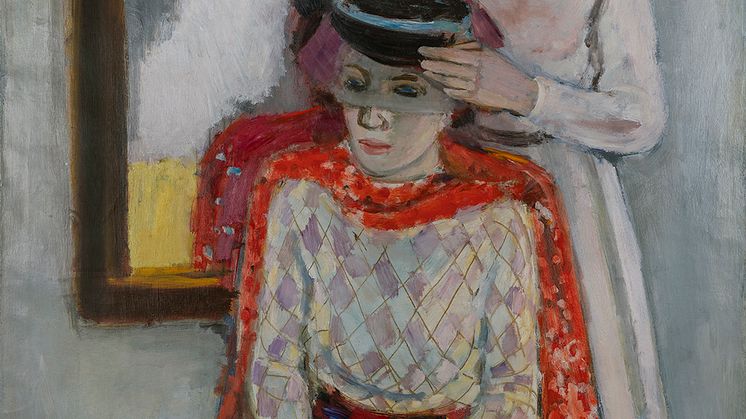
Pressmeddelande -
Beloved Gothenburg Colourists in a new light
Bright colours, sweeping brushstrokes, personal subject matter and emotional visions characterize the painting of the Gothenburg Colourists. The exhibition Wonderful Colour: Gothenburg Colourism in a New Light presents the colourists at the Gothenburg Museum of Art in a comprehensive exhibition with new perspectives. The public can now meet more of the artists in these circles and discover more about the context, both in terms of the city of Gothenburg and the era.
– The Gothenburg Colourists are popular among our visitors. But the most famous colourists are part of a much broader movement. One can say that this kind of Gothenburg painting spans over several generations, says Museum Director Patrik Steorn.
Gothenburg Colourism, a dynamic, colour-driven expressionism without comparison at a national level, had its heyday in the 1930s. It is a visually striking but also tactile style that speaks to the viewer’s senses. The motifs were chosen from the immediate surroundings: portraits and self-portraits, model studies, landscapes, urban scenes and still lifes. A full spectrum of bright colours were used, creating novel modes of expression in combination with the rhythm of the brushstrokes and the thickness of the oil paint.
Success story and tragic history
The tale of the Gothenburg Colourists is a success story about how a handful of students at Gothenburg Museum School of Painting and Drawing (Valand), most of them from simple backgrounds, created a vital art movement with national scope. But they also have a tragic history, as several of them were affected by mental illness and died before their time. Their paintings continue to fascinate new generations of viewers, as do the myths surrounding these artists. Some of these are challenged in the exhibition catalogue.
The Gothenburg Colourists based their works on the visible world, either direct visual impressions or images from memory. They never lost contact with reality. On the contrary, they were stimulated by encounters with the real world, and often sought out inspiring environments and landscapes such as Bohuslän, Hanhals, Bornholm or the French Riviera. Their paintings include depictions of the city of Gothenburg, such as Åke Göransson’s cityscapes from the apartment in Landala, Ivan Ivarson’s vistas from his various studios near Järntorget and Packhusplatsen, Ragnar Sandberg’s renditions of cafés and street life around Drottningtorget and Lilla Bommen, as well as images of the port, a milieu that stimulated the artists’ imagination with its salty tang of the open sea and adventures abroad.
An expanded circle of artists
The exhibition Wonderful Colour: Gothenburg Colourism in a New Light shows the most celebrated names alongside many previously overlooked but inspiring artists, not least the female pioneers.
– This is the first time the museum presents a major exhibition of the Gothenburg Colourists since the 1980s. Now, we have a new take on them, and present many more artists. Last time, none of the female artist were represented, but the new exhibition highlights several female artists such as Maj Arnell, Karin Parrow and Magda Ringius, says Museum Director Patrik Steorn.
Furthermore, both forerunners and followers are displayed, to underline the continuity of colourism in West coast painting. The exhibition also features works by Danish and Norwegian colourists, who were role models and parallels to the Gothenburg Colourists. In this way, the movement is placed in a Scandinavian context.
– The sources of inspiration are in French art, not least Henri Matisse. But out of these influences, the Gothenburg Colourists created something uniquely their own. Colourism was not an isolated Gothenburg phenomenon. Rather, the Gothenburg Colourists should be seen as part of a Scandinavian network of artists who are interested in the expressive possibilities of colour, says Kristoffer Arvidsson, Head of Research at the Gothenburg Museum of Art and the exhibition’s curator.
The colourists found inspiration at the art museum
The Gothenburg Museum of Art has always been an important place for colourism in the city. The young artists visited the recently opened institution during the 1920s and were inspired by the collection. Today, the museum has the foremost selection of colourists in the country. Wonderful Colour: Gothenburg Colourism in a New Light is a jubilee exhibition for 2023, celebrating the 100th anniversary of the Gothenburg Museum of Art, and the quatercentenary of the city of Gothenburg (which took place in 2021). It is a longed-for tribute to Gothenburg’s art history.
The first part of the exhibition, featuring the Gothenburg Colourists and their followers, is shown on the Étages. The part that shows the Danish and Norwegian colourists is in Rooms 24 and 25 on level 6. The exhibition includes 218 works in various techniques such as oil, watercolour, drawing, prints and sculpture.
New research is presented in the exhibition catalogue
In conjunction with the exhibition, a comprehensive, lavishly illustrated catalogue presents new research, providing in-depth knowledge about Gothenburg Colourism in newly written essays by several researchers and writers. Highlighting the city’s importance, and questions concerning galleries, collectors and reception, as well as the artist’s role and historiography, the texts allow us to see the entire movement in a new light.
The exhibition catalogue, which has been produced in collaboration with Appell Förlag, includes contributions by Kristoffer Arvidsson, Per Dahlström, Martin Gustavsson, Andrea Kollnitz, Lydia Sandgren, Patrik Steorn, Håkan Wettre, Jeff Werner and Eva Zetterman. The catalogue is published in both Swedish and English editions. It is available for sale in our museum shop and in digital and physical bookstores.
Wonderful Colour: Gothenburg Colourism in a New Light
Gothenburg Museum of Art
22 April 2023–7 April 2024
Relaterade länkar
Ämnen
Kategorier
Regioner
Göteborgs konstmuseum har en av norra Europas främsta konstsamlingar. Denna sträcker sig från 1400-talet fram till idag med betydande verk inom både nordisk och internationell konst. Förutom samlingen erbjuder museet utställningar, familjeaktiviteter, föreläsningar, workshops och visningar. Museet har en välsorterad museibutik. Samlingen omfattar omkring 70 000 verk och museet har ca 250 000 besökare årligen. Göteborgs konstmuseum är en del av Göteborgs Stads kulturförvaltning. Samfinansierat av Västra Götalandsregionen.




